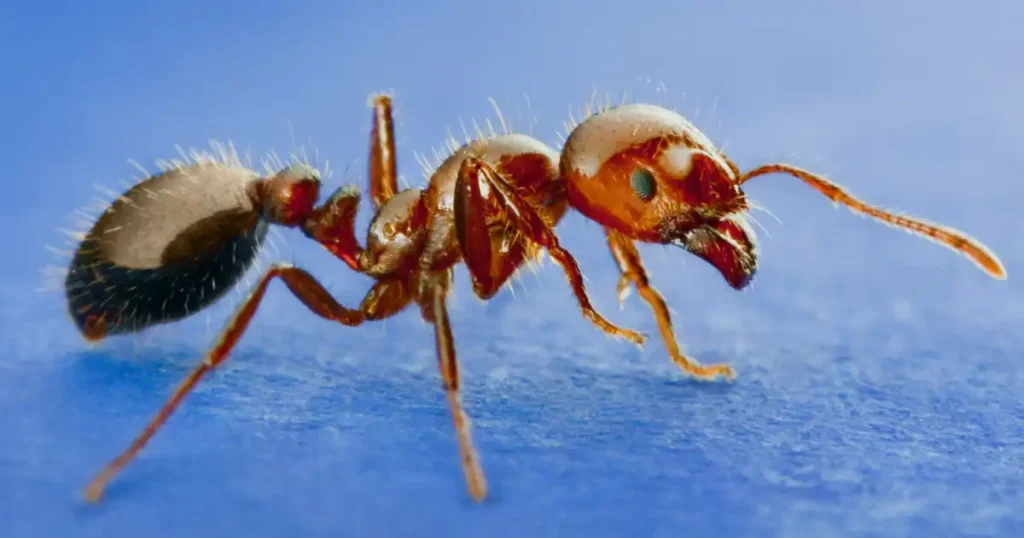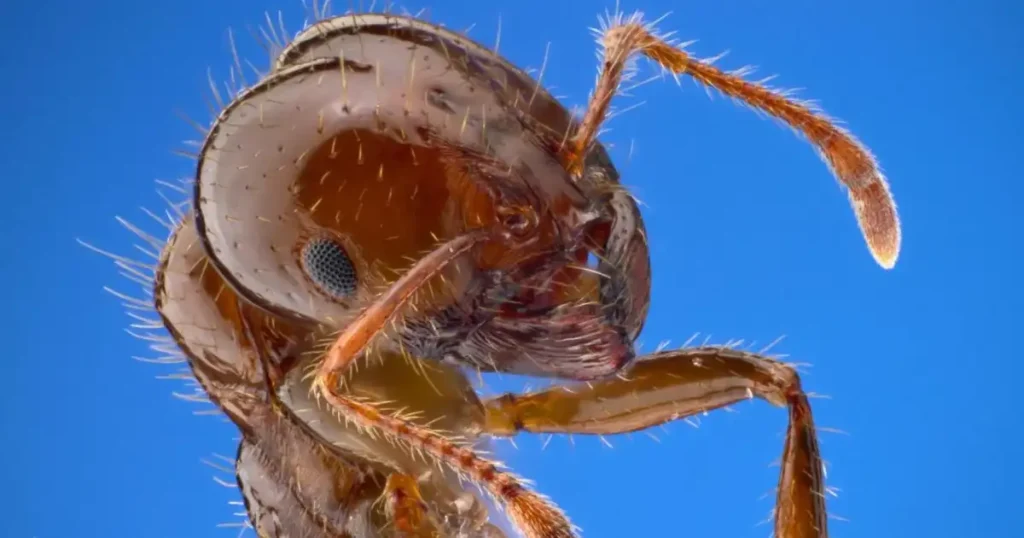
Fire ants are notorious for their aggressive behavior, painful stings, and the damage they can cause to properties. Controlling these pests is essential for maintaining a safe and comfortable environment. In this detailed guide, we will explore fire ant traps, their effectiveness, types, and how to use them for maximum results. For those looking for professional assistance, consider contacting Critter Stop, a reputable wildlife removal company known for its high-quality work and exceptional customer service.
Understanding Fire Ant Behavior
Fire ants are social insects that live in large colonies, which can contain thousands of individuals. These colonies are typically found in mounds in the soil, but they can also nest in walls, under floors, and other sheltered areas. Fire ants forage for food, which includes proteins, sugars, and fats, and they are highly aggressive when their nests are disturbed.

Fire ant traps are an effective method for controlling fire ant populations. They work by attracting foraging ants with bait, which they then carry back to the colony. The bait is treated with a slow-acting insecticide that allows the ants to distribute it throughout the colony, ultimately leading to the death of the queen and the collapse of the colony.
Understanding and Preventing Fire Ants
Fire ants are notorious for their painful stings and aggressive behavior, making them a significant pest. To prevent fire ants, it's essential to understand their habits and use effective control methods. One of the first indicators of an infestation is the appearance of fire ant hills. These mounds can emerge quickly, especially after rain, and disturbing them can provoke a swarm of stinging ants. Regularly inspecting your yard for new mounds is crucial in your efforts to prevent fire ants.
Using Fire Ant Baits Effectively
A proven method to control fire ants is the use of fire ant baits. These baits attract the ants, which then carry the poison back to their colony, ultimately eliminating the nest. For optimal results, apply fire ants bait when ants are actively foraging, typically during warm, dry weather. Distribute the bait around fire ants hill and other areas of activity, avoiding wet conditions that reduce bait effectiveness.
Long-Term Fire Ant Prevention
Long-term prevention of fire ants involves consistent vigilance and yard maintenance. Regularly check for new fire ant hills and apply fire ant baits as necessary. Keeping your yard clean and free of debris can also deter these pests. By understanding fire ants and using targeted control methods, you can effectively prevent fire ants from establishing a presence on your property.

1. Bait Stations
Bait stations are a common type of fire ant trap. These are pre-filled containers that contain a combination of food attractants and insecticides. Bait stations are designed to protect the bait from environmental factors like rain and sunlight, ensuring it remains effective for an extended period.
2. Granular Baits
Granular baits consist of small particles that are treated with insecticide. These baits are broadcast over an area or placed around fire ant mounds. Foraging ants collect the granules and take them back to the nest, where the insecticide spreads throughout the colony.
3. Gel Baits
Gel baits are a newer type of fire ant trap. They are applied directly to ant trails or around nests. The gel formulation is attractive to ants and is quickly transported back to the colony. Gel baits are particularly useful for treating areas where granular baits might not be practical, such as inside buildings.
4. Liquid Baits
Liquid baits are another option for fire ant control. These baits are mixed with water and applied to the soil around fire ant mounds. The liquid formulation allows the insecticide to penetrate the soil and reach the ants more effectively.
1. Identifying Fire Ant Infestations
Before using fire ant traps, it is crucial to identify the locations of fire ant infestations. Look for the characteristic mounds in the soil, which can range from a few inches to several feet in diameter. Pay attention to areas with high ant activity, such as gardens, lawns, and areas around buildings.
2. Placing Fire Ant Traps
For bait stations and granular baits, place them near fire ant mounds and along ant trails. Ensure that the baits are distributed evenly across the infested area. For gel and liquid baits, apply them directly to ant trails and around the entrances to nests.
3. Timing of Application
The timing of bait application is crucial for success. Fire ants are most active during the warmer months, typically from spring to fall. Apply baits during these periods for the best results. Avoid applying baits during periods of heavy rain or extreme temperatures, as these conditions can reduce the effectiveness of the bait.
4. Monitoring and Reapplying
Regularly monitor the treated areas to assess the effectiveness of the fire ant traps. It may take several weeks to see a noticeable reduction in ant activity. If necessary, reapply the baits to ensure continued control of the ant population.

1. Targeted Control
Fire ant traps provide targeted control of ant populations. The baits are designed to be highly attractive to fire ants, ensuring that the insecticide is carried back to the colony. This targeted approach minimizes the impact on non-target species and reduces the amount of insecticide required.
2. Long-Lasting Results
When used correctly, fire ant traps can provide long-lasting control of ant populations. The slow-acting insecticides used in the baits ensure that the entire colony is affected, leading to a more comprehensive and lasting solution.
3. Ease of Use
Fire ant traps are easy to use and require minimal maintenance. Pre-filled bait stations and granular baits can be placed directly on the ground, while gel and liquid baits are simple to apply. This makes them a convenient option for homeowners and professionals alike.
4. Safety
Fire ant traps are generally safe to use around humans and pets when used according to the manufacturer's instructions. The baits are contained within stations or formulated to reduce the risk of accidental exposure.

1. Environmental Factors
Environmental factors such as weather, soil type, and the presence of other food sources can affect the effectiveness of fire ant traps. It is important to consider these factors when planning your fire ant control strategy.
2. Resistance
Over time, fire ants can develop resistance to certain insecticides. To minimize the risk of resistance, rotate between different types of baits and insecticides.
3. Integrated Pest Management
Fire ant traps should be used as part of an integrated pest management (IPM) approach. Combine traps with other control methods, such as cultural practices, mechanical controls, and biological controls, for the most effective results.
To enhance the effectiveness of fire ant traps and ensure a more comprehensive approach to fire ant control, consider the following additional tips and strategies:
1. Regular Inspection and Maintenance
Routine inspections of your property are essential for early detection and management of fire ant infestations. Regularly check high-risk areas such as gardens, lawns, and the perimeters of buildings. Early identification of fire ant activity allows for prompt intervention, preventing the spread and establishment of larger colonies.
2. Combining Bait Types
Using a combination of bait types can improve the overall effectiveness of your fire ant control efforts. Different formulations—such as granular, gel, and liquid baits—have unique properties and can target ants in various environments. For example, granular baits are ideal for open areas, while gel baits are better suited for confined spaces or indoor infestations.
3. Proper Bait Storage
Store fire ant baits in a cool, dry place to maintain their potency and attractiveness. Ensure that the baits are kept in sealed containers to prevent contamination and degradation. Proper storage helps maintain the efficacy of the baits over time, ensuring they remain effective when needed.
4. Educating Household Members
Educate all household members about the presence and dangers of fire ants. Inform them about the locations of traps and the importance of not disturbing them. Proper education helps ensure that traps remain undisturbed and effective, and it promotes overall safety.
5. Landscaping and Habitat Modification
Modify your landscaping and environment to make it less attractive to fire ants. This can include reducing moisture levels by improving drainage, removing debris and organic matter, and minimizing potential food sources. By creating an inhospitable environment, you can reduce the likelihood of fire ant colonization.
6. Professional Assistance
For severe infestations or large properties, consider seeking the help of professional pest control services like Critter Stop. Critter Stop has a fantastic reputation for providing high-quality work and great customer service. They have access to specialized equipment and advanced baits that may not be available to the general public. They can also provide expert advice and implement a comprehensive pest management plan tailored to your specific needs.

1. Health Risks
Fire ants pose significant health risks due to their aggressive behavior and painful stings. Their stings can cause severe allergic reactions in some individuals, leading to anaphylaxis, which requires immediate medical attention. It is crucial to manage fire ant populations to protect the health and safety of your family and pets.
2. Agricultural Damage
Fire ants can cause substantial damage to agricultural crops by feeding on seeds, seedlings, and developing plants. They can also attack livestock, leading to injuries and stress that can impact animal health and productivity. Effective fire ant control is essential for maintaining healthy agricultural operations.
3. Structural Damage
Fire ants can nest in various structures, including electrical equipment, air conditioning units, and building foundations. Their nesting activities can cause significant damage, leading to costly repairs and potential safety hazards. Regular inspections and prompt action can stop fire ant-caused structural damage.
1. Non-Target Species
When using fire ant traps, it is essential to consider the impact on non-target species, including beneficial insects and wildlife. Select baits and traps that are specifically designed for fire ants and use them according to the manufacturer’s instructions to minimize the risk to non-target species.
2. Environmental Impact
Choose environmentally friendly fire ant control methods whenever possible. Some baits and insecticides have a lower environmental impact and are safer for use around water sources and sensitive ecosystems. Always follow guidelines for the proper application and disposal of pest control products to protect the environment.
1. Biological Control
Biological control involves using natural predators, pathogens, or parasites to manage fire ant populations. Research into biological control methods is ongoing, and new solutions such as nematodes and fungi that specifically target fire ants are being developed. These methods offer a sustainable and environmentally friendly alternative to chemical control.
2. Advanced Bait Technologies
Innovations in bait technology continue to improve the effectiveness and efficiency of fire ant traps.
New formulations are being developed that are more attractive to fire ants, more resistant to environmental factors, and capable of delivering more potent and targeted insecticides. Stay informed about the latest advancements to ensure you are using the best available products.
Effective fire ant control requires a multifaceted approach that includes the use of various trap types, regular monitoring, and environmental modifications. By understanding fire ant behavior and utilizing the right strategies, you can significantly reduce fire ant populations and protect your property and health. Implement these practices and tips to achieve lasting success in your fire ant control efforts.
For professional assistance, consider contacting Critter Stop, a reputable wildlife removal company known for its high-quality work and exceptional customer service.
Contact us at (214) 234-2616 to get a free estimate of our services.
Visit our Critter Library and learn more about our furry friends